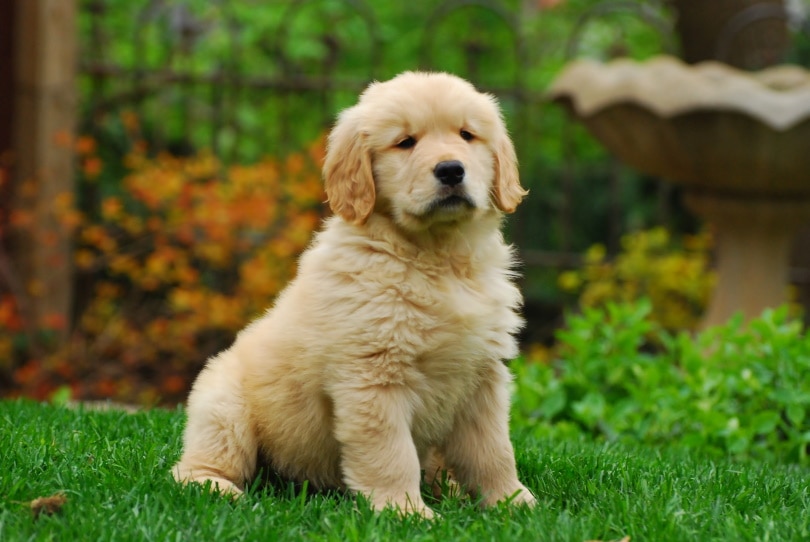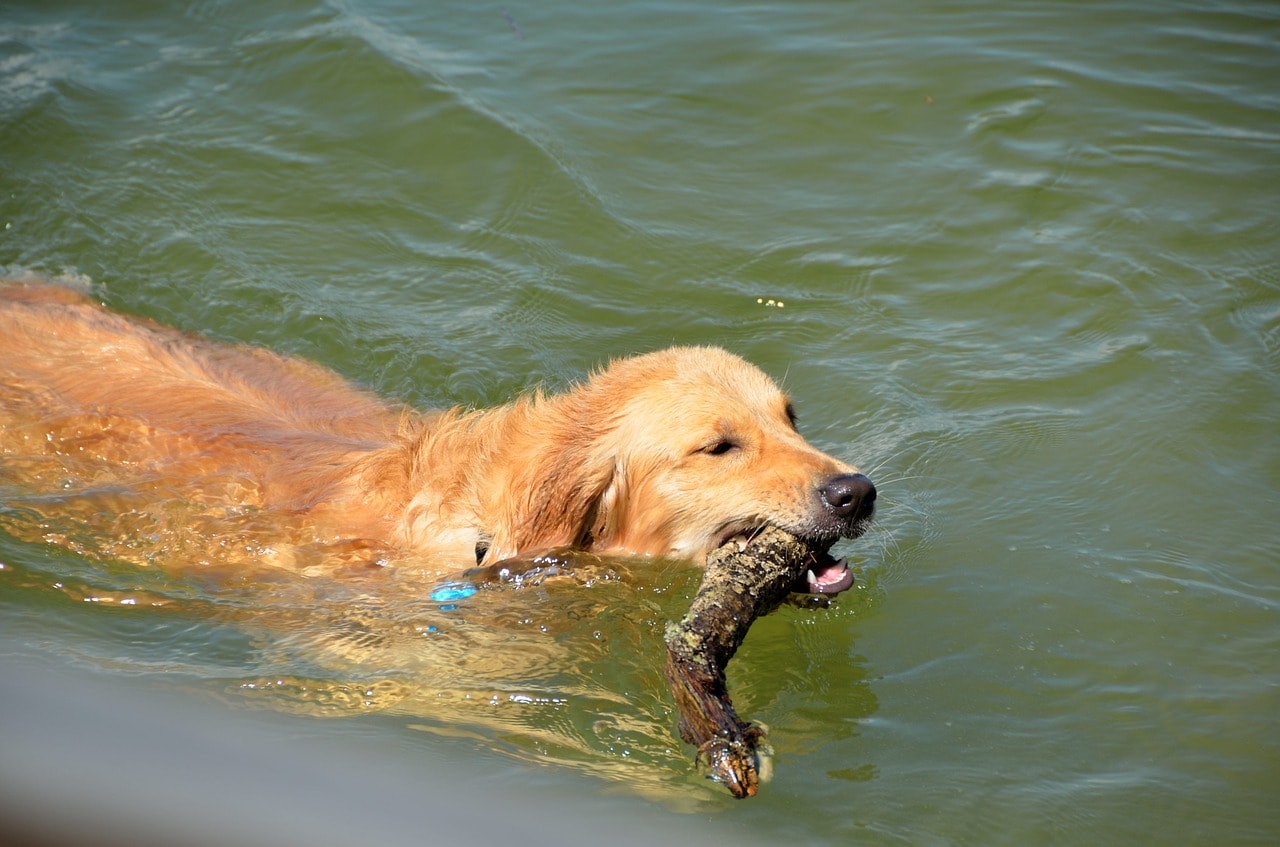
| Height: | 21–24 inches |
| Weight: | 60–75 pounds |
| Lifespan: | 10–12 years |
| Temperament: | Affectionate, loyal, happy-go-lucky |
| Suitable for: | Singles, active families |
You’re likely familiar with the Golden Retriever, but have you heard of the Canadian Golden Retriever? It’s not really a different breed than the Golden Retrievers you’re used to; it’s more of a subtype of retriever. Temperament-wise, you’ll find this dog to be the same as the Golden Retrievers you’re more accustomed to. The differences lay in very tiny details of the breed’s appearance.

What Is the Price of a Canadian Golden Retriever?
The price of a Canadian Golden Retriever can vary pretty wildly, depending on where you get the dog from and what kind of bloodline it has. But if you’re going the route of a breeder, you’re likely looking at anywhere from $500–$4,000. These pups are pricey!
If you’d rather go the adoption route, you can look at local shelters or rescue groups and possibly find one of these dogs for a lower price. If you aren’t in Canada, though, finding one via a shelter could be challenging, and going the rescue group route might involve bringing in the pup from Canada, which adds to the cost (though there are a few rescue groups in the States).


Quick Facts About the Canadian Golden Retriever
The Canadian Golden Retriever isn’t a different dog than the Golden Retriever you’re familiar with; instead, it’s a subtype of the breed. The Golden Retriever breed contains three subtypes: American Golden Retriever, British Golden Retriever, and Canadian Golden Retriever. As the name suggests, the Canadian Golden Retriever is bred in Canada.
The Canadian Golden Retriever doesn’t differ from the other two subtypes of Golden Retrievers in temperament—the differences lay in its coat. Compared to the other two subtypes, the Canadian Golden Retriever has a coat that is thinner and generally darker in color. Plus, you’ll find less feathering of the coat on this dog. The Canadian subtype also tends to be taller and a bit leaner in shape than the other two.
Personality-wise, though, you’re still going to get a goofy, lovable, fun-loving pup that makes an excellent family dog. The Canadian Golden Retriever is sweet, affectionate, and loyal, just like the other subtypes. The Canadian subtype also has the intelligence and obedience levels Golden Retrievers are known for, making them easier to train.
Appearance & Varieties
The Canadian Golden Retriever has breed standards put forth by the Canadian Kennel Club. Not only will the coat differ from the American and British subtypes, as mentioned above, but the Canadian Golden’s coat will be dense and water repellent. It can be wavy or straight but must lay flat against the dog’s body. The feathering of the coat should be moderate on the backs of the front legs but heavier underneath the tail and on the front of the neck. This feathering will still be less than the other two subtypes, though. The coat color can be any lustrous gold shade.
Besides the coat, the Canadian Golden retriever should have a broad head with eyes set well apart. Eye color should be dark brown but can be as light as the shade of the dog’s coat (but no lighter!). The Canadian’s neck should be muscular with a ruff that’s untrimmed, while the tail should resemble that of an American Golden Retriever. And the pup’s ears should have the tip hanging just beneath the jawline.


Temperament & Intelligence of the Canadian Golden Retriever
The Canadian Golden Retriever will have the same temperament as the American and British Golden Retrievers. This means you’ll find these dogs bright, loyal, and friendly. As working dogs, the breed makes excellent companion animals, therapy dogs, and search and rescue workers. All of this sums up to an excellent addition to any household.
This breed thrives on being around people, so it will be absolutely devoted to its “pack”. These dogs are highly energetic, though, so you’ll have to do a fair bit of exercising them each day. That means walks, runs, hiking, and wild romps in the backyard—whatever game is afoot, the Canadian Golden Retriever will be happy to join in.
Does This Breed Get Along with Other Pets?

Like all Golden Retrievers, the Canadian Golden Retriever is calm and laid back with others; this extends not only to the people around them but also to other pets in the home. This dog will do best with pets it has grown up alongside, but so long as your dog has been socialized with people and animals from a young age, it should do fine being introduced if it’s older. Plus, the easy trainability of this breed will help.
Do keep an eye on the Canadian Golden with smaller pets, though, as the breed’s hunting instincts may kick in, which could result in some playful chasing. Again, the breed’s ability to be easily trained will help lessen the risk of this behavior.

Things to Know When Owning a Canadian Golden Retriever
As with any new pet, you’ll need to know how to take care of a Canadian Golden Retriever before getting one. Here are some things you should know.
Food & Diet Requirements 🦴
Canadian Golden Retrievers are on the larger side and active to boot, so they’ll need some calories to keep them going along their merry way! Active dogs should average between 1,353 and 1,740 calories each day, while less active pups should only need between 989 and 1,272 calories a day. This breed enjoys eating, though, so ensure your pet isn’t overdoing it.
No matter the caloric intake your dog requires, you should be feeding them a high-quality dog food that meets all their nutritional needs. That means looking for a food that contains real meat or meat meal as the first ingredient, so your dog gets the protein needed for healthy muscles. And as Golden Retrievers are prone to allergies, you may need to look for an alternate protein source such as duck or bison to avoid setting said allergies off. You’ll also want to check that any food you’re considering is free of peas and legumes, as these have been linked to heart disease in dogs.
Training 🎾

Golden Retrievers are known to be incredibly smart, and the Canadian subtype is no different. Plus, add in the breed’s eagerness to please, and this is one dog you shouldn’t have trouble training. So, if you’re a pet owner who doesn’t have a ton of time on your hands to devote to training, this could be the breed for you.
Other than basic obedience training, you can even train this pup to help around the house (as working dogs love to work!). You can teach them to do small chores or guard the children while they play. Or you can teach your pet tons of tricks. The Canadian Golden Retriever is excellent at picking up new skills quickly.
This breed does require discipline, firmness, and consistency, though. If you think you require help training your dog, you can find a reputable trainer near you or check out training resources to guide you.
Grooming ✂️
The Canadian Golden Retriever might have a shorter, thinner coat than its counterparts, but it’s still reasonably high-maintenance when it comes to grooming—mainly because these dogs are moderate shedders. That means if you don’t want dog hair on everything you own, you’ll have to stay on top of brushing your dog’s coat to reduce shedding. You’ll also need to stay on top of brushing your pet because the Canadian Golden has a tendency to get knots and mats in its fur. This is one pup that needs to be brushed daily, and you’ll likely need more than one brush type to get the job done.
You also need to bathe your pet every 4–6 weeks (or when they become smelly). Plus, you’ll need to regularly apply a topical medication to take care of fleas and ticks, check and clean your dog’s ears weekly, brush its teeth regularly, and trim nails when they become too long.
Health and Conditions 🏥
Other than making sure your Canadian Golden Retriever is eating nutritionally sound food that won’t cause allergies to flare, how can you keep them healthy? One of the most important ways to keep your pet in good health is by ensuring it receives enough exercise each day. As Canadian Goldens are quite active, you’re likely looking at around an hour a day of exercise and play. This can be walks, runs, hikes, or a good game of fetch at the dog park or backyard.
You’ll also need to watch for a few of the health problems Golden Retrievers can be prone to. These include:
Breeding
If you’re interested in breeding Canadian Golden Retrievers, you’ll first need to ensure that the pups you want to breed have been cleared of having any significant diseases that are hereditary. These include hip dysplasia and eye disease.
As far as when to breed, males can begin breeding by 6 months of age (though it’s best to wait until they have reached full sexual maturity). Females, though, shouldn’t be bred until they’ve reached either 2 years of age or have gone through three heat cycles. If you breed females too early, there could be complications.
Pregnancy lasts approximately 63 days.

Is the Canadian Golden Retriever Suitable for You?
If you want a Golden Retriever with a slightly different look than the norm, the Canadian Golden Retriever could be the perfect fit. Likewise, if you’re an active single or are looking to introduce a new pet to your family, the breed could work out well. Even if you’re less active or getting up in years, getting an older Canadian Golden Retriever might work out well since they can be trained to do tasks around the house. Overall, this breed is excellent for the majority of people.
Featured Image Credit: Neelsky, Shutterstock

